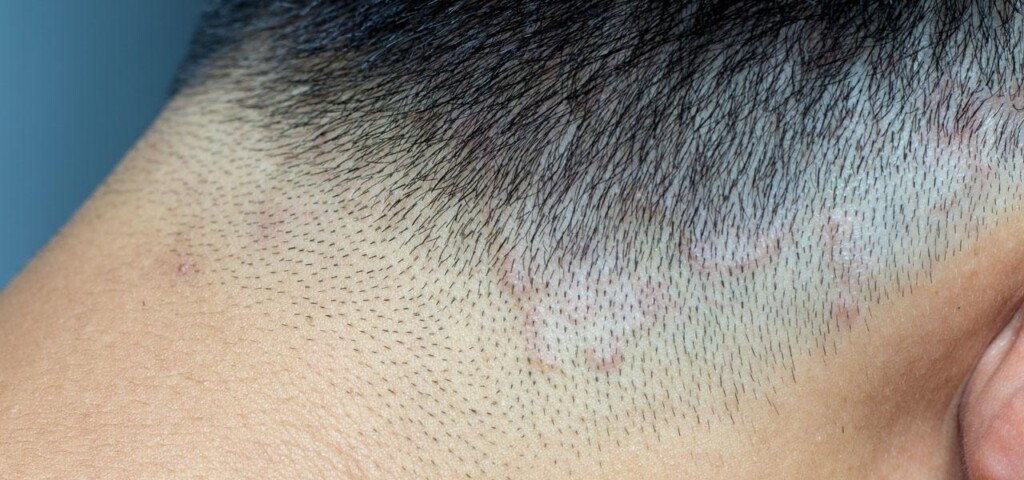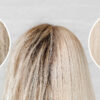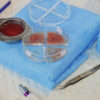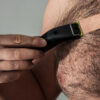Skin changes, in the form of pimples on the head can be a problem for many people. These embarrassing and problematic symptoms can affect many people of different age. The cause of this problem can have various reasons and it is worth taking a closer look at it.
Pimples on the head as a symptom of acne in the hair
A lot of pimples on the head are simply a symptom of scalp acne. The scalp is practically no different from the skin on other body parts. Therefore, it can have the same diseases that affect other parts of the body. Acne on the face or neckline can spread to the scalp. Pimples, hidden under the hair, are less visible, but still very bothersome. Pimples are often filled with purulent contents, and some of them can hurt and cause itching. Acne on the head usually occurs during puberty and is associated with an excessive activity of the sebaceous glands. Therefore, the disease is accompanied by excessive grease. Pimples on the scalp also occur for adults. The causes of acne in adulthood, include an unhealthy diet, poor hygiene, long-term stress, and endocrine problems. Acne treatment consists of topical or oral medication. You can use an antibiotic treatment.

Hard sore spots
If you have hard, painful pustules on your scalp, this may indicate seborrheic dermatitis or pyoderma. In this situation, it is recommended to consult a doctor or dermatologist to receive appropriate treatment.
- In the case of seborrheic dermatitis, treatment usually consists of using shampoos and other scalp care products that contain anti-inflammatory and antibacterial substances. The doctor may also prescribe oral medication or antibiotic creams or ointments if the pustules are particularly persistent or recurring.
- In the case of purulent folliculitis, it is recommended to avoid washing your hair too often and use mild shampoos that do not irritate the scalp. In the event of an infection, your doctor may prescribe antibiotics in the form of creams or ointments and point you to necessary hygiene, such as using warm compresses on the affected skin.
In any case, it is important to consult a doctor or dermatologist to determine the cause of the pustules and receive appropriate treatment.
Inflammation of the hair follicle
Another cause of pimples on the head may be folliculitis. This disease is caused by bacteria, viruses or fungi. On the scalp, eruptions appear, which are filled with purulent contents with a yellowish tinge. The scalp may then be red. Pustules in folliculitis are the result of improper scalp hygiene. Washing the head too rarely, will lead to the accumulation of bacteria and will promote the development of infections. The causes of folliculitis also include reduced immunity, mechanical damage, and the use of poor-quality cosmetics. A quick reaction and a visit to a specialist will help to reduce the development of this disease. In most cases, topical antibiotics are used. For patients with mild symptoms, a special ointment for folliculitis is used.
Psoriasis
Changes, that appear on the scalp may be associated with psoriasis, which is a chronic disease. Epidermal cells grow too quickly and cause the formation of so-called scales. They take the form of red or white patches on the skin. Psoriasis is usually located on the elbows, knees, buttocks or scalp. The disease can have a very different course and a difficult prognosis for healing. Remember, that psoriasis cannot be infected, and its causes lie in genetics. The method of treating psoriasis, depends on the severity and its course. Psoriasis is currently incurable, and the goal of treatment is to reduce the severity of skin lesions and remission of the disease. To this state, exfoliating drugs or general anti-inflammatory drugs are used. Phototherapy with UVA and UVB rays is also a good solution.
Tinea
Many problematic cases are caused by fungi located on the scalp. The disease develops and increases due to poor hygiene, skin damage, reduced immunity, or the use of other people’s towels. One of the symptoms is pruritus. An experienced dermatologist should treat the mycosis. At first, topical treatment is used, which involves using ointments or creams. The second type of treatment is oral administration.
Prevention of pustules and scabs
It is very important not to squeeze or scratch pimples or scabs. This leads to the spread of bacteria and the severity of the disease. A good solution is to stop using invasive scalp treatments. We are talking about upholstery or drying hair with a hot blow dryer. For the scalp, use high-quality natural cosmetics, that will strengthen the hair follicles and scalp. Lifestyle, stress reduction and a healthy balanced diet are also important.
Home remedies for pimples on the head
Pimples on the scalp can be caused by various reasons, such as dandruff, acne or seborrheic dermatitis. Depending on the cause, different treatments may be required. Here are some general home remedies that can help soothe scalp pustules:
- Wash your hair regularly: Washing your hair regularly can help remove excess sebum and dirt, which can contribute to pustules. It is good to use mild shampoos and avoid strong detergents.
- Washing the scalp with an apple cider vinegar solution: Apple cider vinegar has antibacterial and antifungal properties that can help fight the microbes that cause pustules on the scalp. Make a solution of one part apple cider vinegar and one part water and rub it over your scalp.
- Use of essential oils: Some essential oils, such as tea tree oil and lavender oil, have antibacterial and anti-inflammatory properties that can help fight pustules on the scalp. They should be diluted with another carrier oil, such as coconut oil, before use.
- Avoiding Irritants: Avoiding scalp irritants, such as strong hair care products, can help prevent scalp pustules.
In the case of severe, persistent or recurrent pustules on the scalp, it is recommended to consult a dermatologist.





